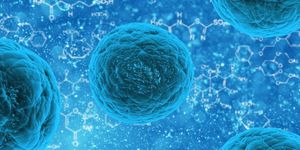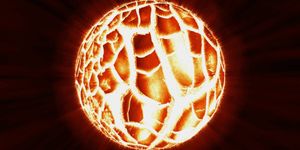Scientists discover new pain-sensing organ in skin
Schwann cells are octopus-like cells in the nervous system that wrap around nerve cells, jelly-roll fashion, to form a special insulating layer. These cells are known to protect neurons and aid in transmitting neural electrical signals. Recently, researchers discovered that Schwann cells do much more than support neurons: they sense pain - a discovery that may lead to the development of new painkilling drugs.
Schwann cells are located deep below the outer layer of the skin and send long extensions that wrap around pain-sensing nerves in the epidermis, the outer layer of the skin. In a study published in Science, Dr. Patrik Ernfors of the Karolinska Institute in Sweden and his team examined skin tissues of mice and found that Schwann cells themselves, rather than nerve endings alone, help detect painful stimuli. This was surprising because historically, experts believed that pain was initiated by the activation of bare or "unwrapped" nerve endings.
The discovery was made using optogenetics, a tool that allows scientists to stimulate specific types of neurons with light. Dr. Ernfors and colleagues used this tool to stimulate Schwann cells in the skin of mouse feet. When light was shown on these specific cells, mice lifted their feet and showed behavior such as licking and guarding of their paws - signs that stimulating the cells caused pain.
After Schwann cell stimulation, mice were then exposed to other stimuli, such as heat, cold, and pinpricks, and showed a stronger pain response. This suggests that the cells are important for sensing pain - at least for mechanical harm.
According to authors, Schwann cells do not act alone to detect pain: rather, they are important for transmitting nociceptive information, or pain sensation information, to the nerve cells they surround. Anatomically, Schwann cells engulf nerve cells to form a mesh-like network under the skin.
"It is a two-cell receptor organ: the nerve and Schwann cell together," Ernfors said.
The work has yet to be replicated in humans but may shine light onto breakthrough treatments for pain. "The major question for us now if whether these cells are actually the cause for certain kinds of chronic pain disorders," said Ernfors.
Did you know that pain is both biological and psychological? Find out more about biological nociception and the mental factors of pain below:
Source: The Guardian, Science









